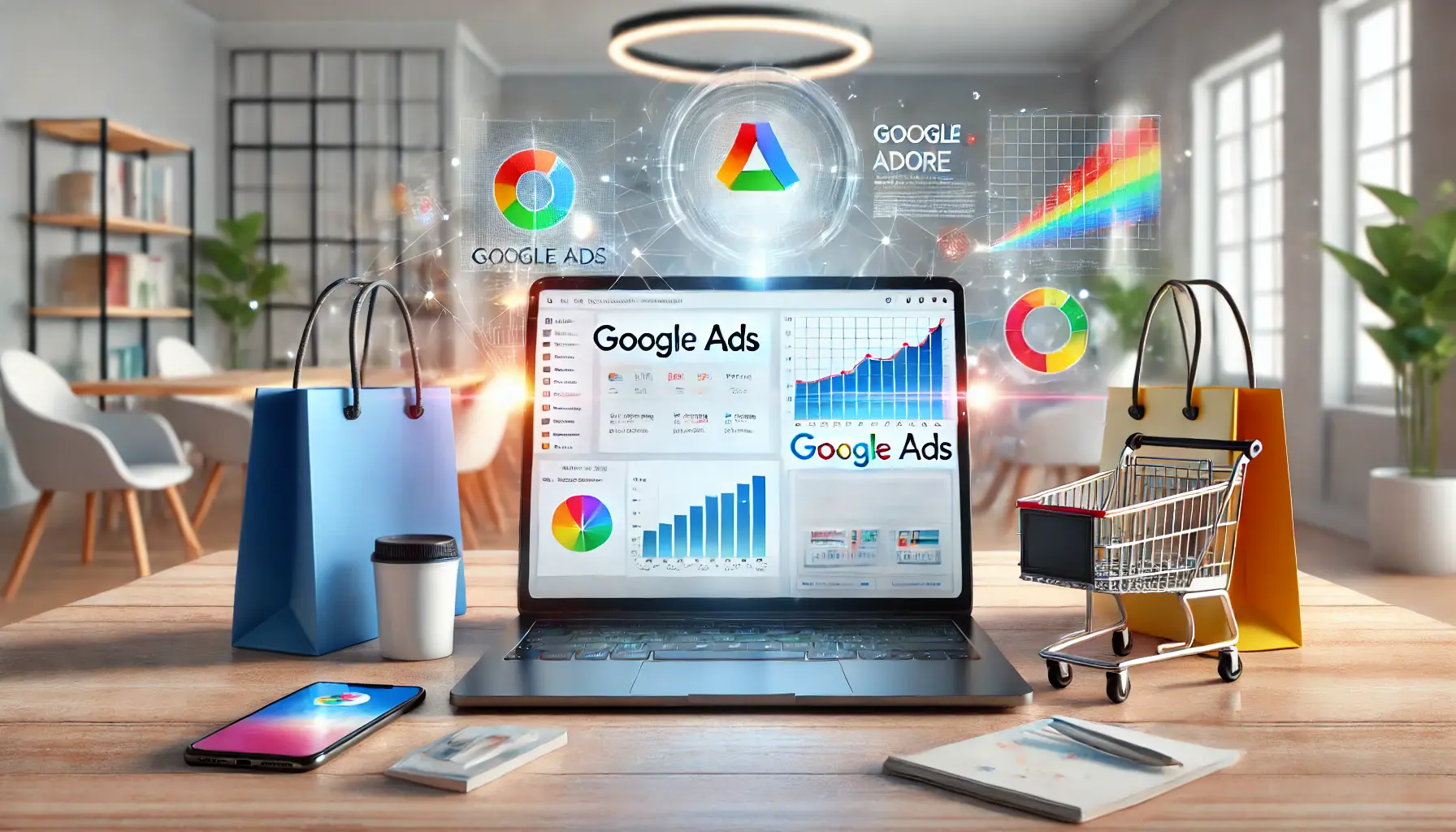In the cutthroat world of digital marketing, understanding consumer behavior is not an advantage but a necessity.
Every click, scroll, and purchase decision made by consumers reveals valuable insights into their preferences and habits.
To marketers, especially those utilizing Google Ads, decoding these patterns can mean the difference between a successful campaign and a missed opportunity.
By capitalizing on consumer behavior, you can craft targeted and effective store ads that not only reach your audience but also drive meaningful engagement and sales.
In this article, we will explore how to harness the power of consumer behavior to create impactful advertising campaigns.
Let’s begin with the first crucial step: understanding the fundamentals of consumer behavior in retail advertising.
- Understanding Consumer Behavior in Retail Advertising
- Leveraging Data Analytics to Decode Shopper Preferences
- Strategies to Align Store Ads with Consumer Behavior
- Applying Behavioral Science Principles to Ad Design
- Measuring the Impact of Consumer Behavior on Ad Performance
- Maximizing the Power of Consumer Behavior in Advertising
- Frequently Asked Questions about Consumer Behavior in Advertising
Understanding Consumer Behavior in Retail Advertising
Consumer behavior refers to the study of how individuals make decisions to spend their available resources—time, money, and effort—on consumption-related items.
In the context of retail advertising, understanding consumer behavior helps marketers predict what motivates their audience, what drives their decisions, and how to meet their expectations.

undefined
The Role of Consumer Behavior in Ad Campaigns
Have you ever stopped and thought about why some ads appeal to you while others do not?
It is all about consumer behavior.
Analyzing behavioral patterns allows marketers to tailor their campaigns to the needs and desires of their target audience.
In such a case, you can be certain that the people viewing your ads also remember them.
- Targeting the Right Audience: Insights into consumer behavior focus on specific demographics, interests, and behaviors.
- Crafting Relevant Messaging: Messages tailored to audience preferences are more likely to convert.
- Optimizing Ad Formats: Different audiences engage with different ad formats, from video ads to carousel ads.

undefined
Key Factors Influencing Purchase Decisions
To effectively target consumers, it’s crucial to understand the factors that influence their purchase decisions.
These can include psychological, social, and emotional triggers.
- Price Sensitivity: Many consumers prioritize value for money over brand loyalty.
- Brand Trust: Consumers often choose brands they perceive as reliable or familiar.
- Urgency and Scarcity: Limited-time offers or exclusive deals create a sense of urgency that drives purchases.

Retail marketing utilizing psychological triggers like urgency and emotional appeal.
Psychological Triggers in Retail Marketing
A range of psychological triggers can heavily influence consumer behavior.
These triggers vary, from the use of colors and imagery to the strategic placement of a call-to-action button.
Ads are more likely to succeed when they evoke emotions such as happiness, nostalgia, or excitement.
This also ties into the concept of social proofA concept where people follow the actions or opinions of others to make decisions, such as relying on reviews or testimonials.—reviews, testimonials, and user-generated content build trust and authenticity.
- FOMO (Fear of Missing Out): Highlighting scarcity or time-sensitive deals encourages immediate action.
By understanding these aspects of consumer behavior, you can create store ads that not only connect with your audience but also drive tangible results.
Ready to dive deeper?
In the next section, we’ll explore how data analytics can help decode shopper preferences and refine your advertising strategies.
Consumer behavior insights reveal how individuals decide to spend their time, money, and effort, which is critical for shaping effective ad campaigns.

Data analysts utilizing advanced analytics tools to decode shopper preferences.
Leveraging Data Analytics to Decode Shopper Preferences
In today’s data-driven world, understanding consumer behavior is more accessible than ever.
By leveraging data analytics, you can gain deep insights into shopper preferences, enabling you to tailor your marketing strategies effectively.
Let’s explore how data analytics can help decode these preferences.

Marketing team using customer analytics to create targeted marketing strategies.
Utilizing Customer Analytics for Targeted Marketing
Ever wonder how some brands seem to intuitively know exactly what you want?
That’s the power of customer analytics at work.
By analyzing data such as purchase history, browsing behavior, and engagement metrics, businesses can:
- Identify Customer Segments: Segment customers according to similarities in characteristics or behaviors for personalized marketing messages.
- Predict Future Behavior: Use past data to predict future purchases, enabling proactive marketing efforts.
- Optimize Product Recommendations: Suggest products that align with individual customer preferences, enhancing the shopping experience.

Analysts interpreting shopping behavior data to uncover insights and trends.
Interpreting Shopping Patterns through Data
Understanding shopping patterns is crucial for effective marketing.
By analyzing data, you can uncover trends such as peak shopping times, popular products, and customer journey paths.
This information allows you to:
- Optimize Inventory Management: Ensure popular items are well-stocked to meet demand.
- Enhance Store Layouts: Arrange products strategically based on shopping behaviors to increase sales.
- Develop Timely Promotions: Launch marketing campaigns when customers are most likely to engage.

Analysts collaborating and interpreting consumer behavior data using advanced analysis tools.
Tools for Analyzing Consumer Behavior in Retail
To effectively analyze consumer behavior, it’s essential to utilize the right tools.
Here are some popular data analytics tools that can help you gain valuable insights:
- Google Analytics: Tracks website traffic and user behavior, providing insights into how customers interact with your online store.
- IBM Watson Analytics: Offers advanced data analysis capabilities, including predictive analytics to forecast future trends.
- Tableau: Provides data visualization with interactive dashboards to comprehend large amounts of data.
- Salesforce Einstein Analytics: Integrates with CRM data for deep insights into customer behavior and sales performance.
By using these tools, you can better understand consumer behavior and make informed decisions to enhance your marketing strategies and customer satisfaction.
Understanding and leveraging consumer behavior through data analytics is a powerful strategy in today’s retail landscape.
By utilizing customer analytics, interpreting shopping patterns, and employing the right tools, you can create targeted marketing campaigns that resonate with your audience and drive business success.
Utilizing data analytics allows marketers to understand shopper preferences, optimize campaigns, and deliver more personalized experiences.

Marketing team aligning store ads with consumer insights to improve engagement.
Strategies to Align Store Ads with Consumer Behavior
Understanding consumer behavior is essential, but applying this knowledge to your advertising strategies is where the real impact lies.
By aligning your store ads with consumer preferences and behaviors, you can enhance engagement and drive conversions.
Let’s explore some effective strategies to achieve this alignment.

undefined
Personalizing Advertisements Based on Shopper Insights
Have you noticed how some ads seem to speak directly to your needs?
This personalization comes from analyzing shopper insights such as purchase history, browsing patterns, and demographic information.
By positioning your ads to reflect individual tastes and preferences, you can:
- Increase Relevance: Personalized ads resonate more with consumers and therefore have greater engagement.
- Enhance Customer Experience: When a consumer feels understood, their experience improves.
- Boost Conversion Rates: Relevant ads can lead to higher purchase intentions and sales.
For instance, companies like Flipboard personalize content based on user-selected topics and geographic location, enhancing user engagement.
Similarly, Amazon’s ‘Customers Also Viewed’ recommendations are tailored based on customer segments, providing personalized shopping experiences.

Marketing team analyzing buying patterns to optimize promotion timing.
Timing Promotions to Match Buying Cycles
Ever received a promotion at just the right time?
Timing your ads to customers’ buying cycles can dramatically affect how well they’re received.
Consider the following strategies:
- Seasonal Promotions: Provide offers around seasonal needs or holidays.
- Behavioral Triggers: Send promotions based on specific customer actions, like cart abandonment.
- Lifecycle Marketing: Send messages that correspond to different stages of the customer journey, from awareness to loyalty.
Knowing when your target audience is most likely to make a purchase empowers you to deliver timely and relevant promotions, increasing the likelihood of conversion.

Creative team working on designing content that emotionally resonates with consumers.
Designing Engaging Content that Resonates with Consumers
Have you ever been captivated by an ad’s content?
Crafting engaging advertisements that reflect consumer interests and values enables your audience to connect with them on a deeper level.
To achieve this:
- Make Emotional Appeals: Ads appealing to emotions, such as happiness or nostalgia, are often more effective.
- Social Proof: Testimonials or user-generated content can build trust.
- Use Storytelling: Narratives that resonate with consumers can increase engagement.
For example, Coca-Cola’s campaign featuring personalized name labels on bottles created a personal connection and encouraged sharing, fostering a sense of individual engagement with the brand.
By applying these strategies, you can ensure that your store ads not only reach but also resonate with your target audience on a personal level, driving greater engagement and sales.
Aligning ads with consumer behavior through personalization, timing, and engaging content leads to better audience connection and increased conversions.

Design team collaborating to apply behavioral science principles like scarcity, social proof, and reciprocity to ad designs.
Applying Behavioral Science Principles to Ad Design
Understanding consumer behavior is essential, but applying behavioral science principles to your ad design can significantly enhance effectiveness.
By leveraging insights into how consumers think and make decisions, you can create advertisements that resonate deeply and drive action.
Let’s explore key principles to consider.

Shopper responding to urgency created by the scarcity principle in a retail setting.
Utilizing the Scarcity Principle to Drive Urgency
Have you ever felt compelled to act quickly because an offer was limited?
This is the scarcity principleA behavioral science principle suggesting that limited availability increases the perceived value of a product or service. in action.
By framing a product or service with limited availability or time-sensitive offers, you can create urgency that will drive consumers to immediate action.
- Limited-Time Offers: Promotions available for a short period encourage immediate action.
- Exclusive Deals: Offers available to a select group make consumers feel special and prompt quick decisions.
- Low Stock Alerts: Indicating limited stock can push consumers to purchase before items run out.
Implementing scarcity in your ads can lead to increased engagement and conversions, as consumers are driven by the fear of missing out.

undefined
Leveraging Social Proof to Build Trust
Ever decided to try a product because others recommended it?
Social proof is a potent motivator.
By highlighting testimonials, reviews, or user-generated content, you can build a sense of trust and credibility with your audience.
- Customer Testimonials: Sharing positive experiences from previous customers can sway potential buyers.
- Ratings and Reviews: Showcasing high ratings and favorable reviews reassures consumers of the quality of your product.
- User-Generated Content: Featuring content created by real users adds authenticity to your brand.
Incorporating social proof in your ad design can enhance credibility and persuade consumers to choose your products or services.

undefined
Applying the Principle of Reciprocity in Advertising
Have you ever felt obligated to return a favor after receiving something?
Under the principle of reciprocity, when you give something to consumers, they feel obliged to return it.
You can use this in advertising by providing value upfront.
- Free Samples: Offering free samples encourages people to buy the product.
- Valuable Content: Sharing useful information or resources builds goodwill and fosters customer loyalty.
- Exclusive Access: Early access to products or events makes consumers feel special and encourages brand support.
By using the principle of reciprocity, you can develop favorable consumer associations that spur action and conversion.
These principles of behavioral science, integrated into the design of your ads, make them more appealing and irresistible.
It’s about understanding how consumer behavior works, influencing it, and creating ads that not only capture attention but drive meaningful action.
Incorporating behavioral science principles like scarcity, reciprocity, and social proof can significantly enhance ad effectiveness.

Marketing team analyzing consumer behavior metrics to measure ad performance.
Measuring the Impact of Consumer Behavior on Ad Performance
Understanding how consumer behavior influences ad performance is crucial for optimizing your marketing strategies.
By analyzing key metrics, you can gain insights into the effectiveness of your advertisements and make data-driven decisions to enhance future campaigns.
Let’s explore some essential metrics and tools to consider.

Marketing team reviewing key ad performance metrics like CTR, CPC, and ROAS.
Key Metrics for Evaluating Ad Performance
Have you ever wondered how to determine if your ads are truly effective?
Monitoring specific metrics can provide valuable insights:
- Click-Through Rate (CTR): Measures the percentage of viewers who click on your ad, indicating its relevance and appeal.
- Conversion Rate: Assesses the proportion of ad clicks that result in desired actions, such as purchases or sign-ups.
- Cost Per Acquisition (CPA): The average cost to acquire a customer through your ad, reflecting campaign efficiency.
- Return on Ad Spend (ROAS): The revenue generated for every dollar spent on advertising, indicating overall profitability.
- Engagement Metrics: Likes, shares, comments, and time spent on your ad content reflect audience interaction and interest in your ad content.
By regularly monitoring these metrics, you can assess the effectiveness of your ads and identify areas for improvement.

undefined
Tools for Analyzing Consumer Behavior and Ad Effectiveness
Ever felt overwhelmed by the sheer volume of data from your marketing campaigns?
Utilizing the right tools can simplify analysis and provide actionable insights:
- Google Analytics: Tracks website traffic and user behavior, offering insights into how consumers interact with your site post-ad exposure.
- Facebook Ads Manager: Provides detailed performance metrics of your ad campaigns on Facebook, from demographics to engagement statistics.
- HubSpot: Offers comprehensive marketing analytics, aggregating data across various channels to assess campaign performance and consumer behavior.
- Mixpanel: Specializes in user engagement and retention analytics to show you how consumers are interacting with your product or service over time.
- Hotjar: Provides heatmaps and session recordings to visualize user behavior on your website, identifying areas of interest and potential obstacles.
These tools will give you deeper insights into consumer behavior to help you shape your ads accordingly.

Marketing team using data insights to optimize future campaigns.
Interpreting Data for Future Campaign Optimization
Are you that person who looks at your campaign data and has no idea where to go from there?
Proper interpretation will help in guiding future marketing efforts in the right direction.
- Find Trends: Consume the behavioral metrics of consumers to find out what works for your audience.
- Segment Your Audience: Analyze the data for distinct consumer segments so that your advertising may be more effectively targeted and personalized.
- Test and Iterate: Run A/B testing on different ad elements, using the results of these tests to refine your campaigns.
- Budget Wisely: Know which channels and strategies generate the highest ROAS; adjust your budget accordingly.
- Competitor Performance Evaluation: Analyze industry benchmarks or your competitors to find opportunities for one-upmanship.
By interpreting consumer behavior data thoughtfully, you can make informed decisions that enhance the effectiveness of your advertising campaigns.
By integrating these practices into your marketing strategy, you will be able to measure the consumer behavioral impact on ad performance with accuracy.
This knowledge will enable you to build more engaging, efficient, and effective ad campaigns that resonate with your target audience.
Track key metrics such as CTR, conversion rates, and ROASReturn on Ad Spend; a metric that measures the revenue generated for every dollar spent on advertising. to evaluate and improve the effectiveness of consumer behavior-driven ads.

Marketing team utilizing consumer behavior insights to enhance ad campaigns.
Maximizing the Power of Consumer Behavior in Advertising
Understanding and leveraging consumer behavior is a cornerstone of successful advertising.
Throughout this article, we’ve explored how insights into consumer actions and preferences can shape more effective and engaging ad campaigns.
By aligning your strategies with these behaviors, you can drive meaningful results and create lasting connections with your audience.

Team of professionals discussing key insights from the article in a collaborative office setting.
Key Takeaways from the Article
Key takeaways to remember when incorporating consumer behavior into your advertising are as follows:
- Understand the Basics: Consumer behavior is a vital factor in shaping ad relevance and appeal.
- Leverage Data Analytics: Tools like Google Analytics and Facebook Ads Manager help decode shopper preferences and measure performance.
- Align Strategies with Behavior: Personalize ads, time promotions aptly, and create engaging content to resonate with your audience.
- Apply Behavioral Science Principles: Use scarcity, social proof, and reciprocity to enhance the effectiveness of your ads.
- Measure and Refine: Monitor key metrics, analyze consumer data, and adjust campaigns to optimize performance and ROI.

undefined
Building a Consumer-Centric Advertising Approach
Putting consumer behavior at the center of your advertising has the power to engender deeper engagement and trust with your audience.
This approach will not only add value to your ads but also make brand experiences more personalized and relevant to consumers.
Consider these steps for building a consumer-centric strategy:
- Continuously analyze data for up-to-date knowledge on evolving consumer trends.
- Segment your audience to deliver targeted and relevant messages.
- Test various ad elements to identify what resonates most with your audience.
- Incorporate feedback and consumer insights into campaign planning.
Ultimately, your ability to adapt to consumer behavior will determine the success of your advertising campaigns in an ever-competitive market.

undefined
Embracing Innovation in Advertising
The digital advertising landscape is changing constantly, and staying ahead means embracing innovation at every turn.
From leveraging sophisticated analytics tools to experimenting with innovative ad formats, integrating consumer behavior into your strategy is not just a one-time effort—it’s an ongoing process.
As consumer expectations and behaviors evolve, so too should your approach to advertising.
Equipped with a data-driven and consumer-focused mindset, you’ll drive campaigns that capture not just attention but forge lasting relationships—thriving in the dynamic ecosystem that advertising has become today.
By leveraging consumer behavior insights and innovative strategies, businesses can create more targeted, engaging, and results-driven ad campaigns.

Marketing team discussing consumer behavior insights to address common advertising questions.
Your campaigns can be managed by an agency specialized in Google Ads, check out our service page.
Frequently Asked Questions about Consumer Behavior in Advertising
Understanding consumer behavior is crucial for effective advertising strategies.
Here are some common questions and concise answers to help you navigate this complex field.
Consumer behavior examines how individuals select, purchase, and use products or services, influencing marketing strategies.
Understanding consumer behavior helps marketers build focused advertisements that resonate with their audiences and drive both engagement and conversions.
Data analytics highlights patterns in consumer actions, providing insights that inform targeted and effective marketing campaigns.
Psychological factors, including emotions and perceptions, significantly influence consumer decisions, steering marketing approaches.
By aligning ads with consumer preferences and behaviors, businesses can increase relevance, boost engagement, and drive conversions.
Psychological influences, social dynamics, cultural background, and personal preferences are key factors driving purchase decisions.
Social proof, like testimonials and reviews, builds trust and influences consumers to choose certain products or services.
The scarcity principle suggests that limited availability increases a product’s perceived value, prompting quicker purchase decisions.
Businesses can assess metrics like click-through rates, conversion rates, and return on ad spend to evaluate ad effectiveness.











